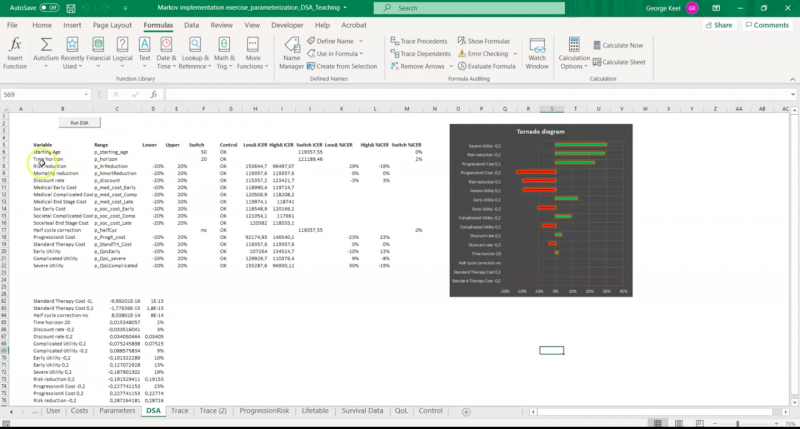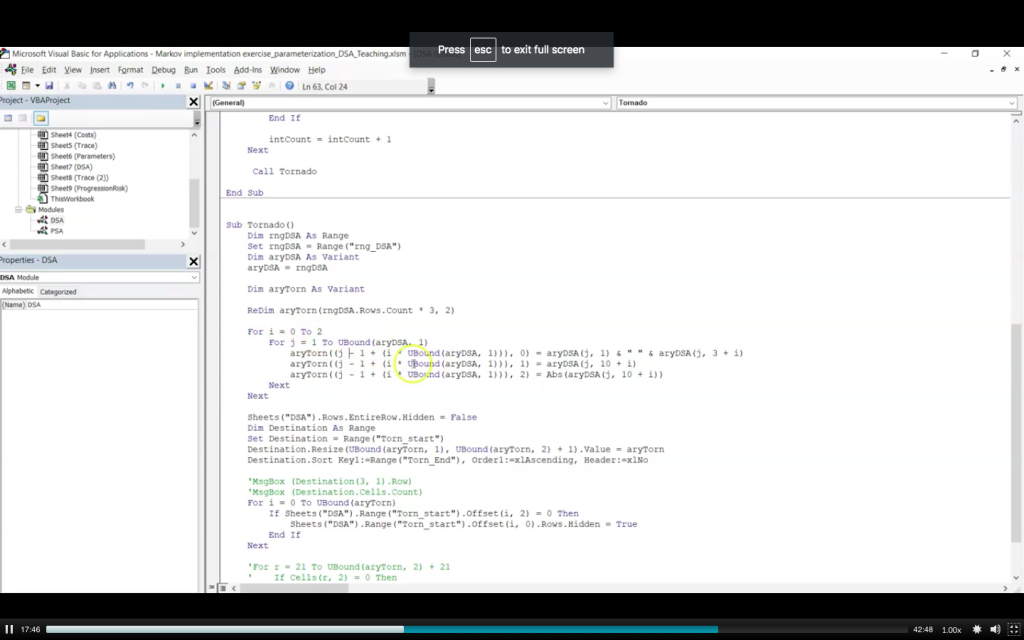
Advanced health economics: a course review
Hej readers! This is the last review of our advanced courses at the Health Economics, Policy and Management programme, which means we only have one more course left before the thesis semester! The whole purpose of this course was to teach us how to conceptualize, build, analyse and present a health economics model using Microsoft Excel. This was also our first official encounter with Markov models, as well as with probabilistic sensitivity analyses. Although challenging for most of us, the course was very relevant and enlightening for everyone in the class regardless of future career tracks.
Schedule:
This course was very unique regarding schedule. The total duration was 3 weeks but they were spread across the semester. We had our first week after Medical Statistics II, the second week after the Advanced Health Policy course and the last at the end of the Advanced Management course. Although a bit odd a the beginning, this design was highly appreciated by students since we had enough time between weeks to digest the information and work with our models. The teaching sessions were held in the mornings, leaving all afternoons for group work. Teachers were available for answering questions and helping us with our models.
Course design and content:
We used an hybrid system for teaching.
Lectures:
Teaching sessions were delivered using zoom. At the start of each morning, we were provided with a short reading and a non-graded quiz before the session. This was very useful since it helped us prepare for the topic of each session.
Support sessions:
Teachers were available both online and on campus for the support sessions. Here, we were encouraged to work in our models while receiving guidance. I must say this was key for our learning process since it helped cement concepts presented in the lectures. Also, since we were building health economic models, we learned more by working/practicing rather than reading.
Content:
This course covered the following topics:
- Critical assessment of decision models
- Decision tree and Markov modelling by using Microsoft Excel
- Model structure
- Populating a model with data
- Analyse the cost-effectiveness of a model
- Basic VBA coding
- Deterministic and probabilistic sensitivity analysis
- Present and interpret the results of the uncertainty analysis.

Teachers:
Our course director was Peter Lindgren MSc PhD, who is the current Managing Director (Head) of the Swedish Institute for Health Economics (IHE). Prof Lindgren is a very experienced and highly respected health economist with more than 100 publications and 20 years of experience in the field.
On the other hand, we were very lucky to have George Keel, MSc PhD joining as professor for this course. Prof Keel serves as Research Manager at the IHE and was part of the first cohort of the HEPM programme almost a decade ago!
Evaluation:
The assessment for this course was somehow different. Since our main purpose during the course was to build a health economics model, grades were tied to the development of each group’s work.
- Group evaluation: Our final deliverables consisted of a Markov model and a cost-effectiveness analysis model&report. We worked all the way in couples assigned randomly by the staff and, although we worked constantly during the 3 weeks with deadlines and assignments about the model, only the final version was graded. This assignment was only graded as pass/fail, since professors wanted us to focus on the learning process rather than in grades. We were asked to prepare a presentation of our model for some of our peers. This activity helped us practice how to present the findings correctly to stakeholders. At the end of the course, we were all very proud of the work we had done for the past months.
- Individual assignment: In order to get a pass with distinction, teachers asked individual students to submit a Probabilistic Sensitivity Analysis following some given instructions. Some found it to be very challenging while others did not struggle as much. I believe it depends partially on your level of mastery using Excel.

Stay tuned for the last course review! And please do not hesitate to contact me if you have any questions.
Godspeed,
Julio Sosa.
email: julio.sosa@stud.ki.se
Linkedin: https:/www.linkedin.com/in/julio-sosa-maldonado-659301175/
Instagram: @julio.sosam

0 comments